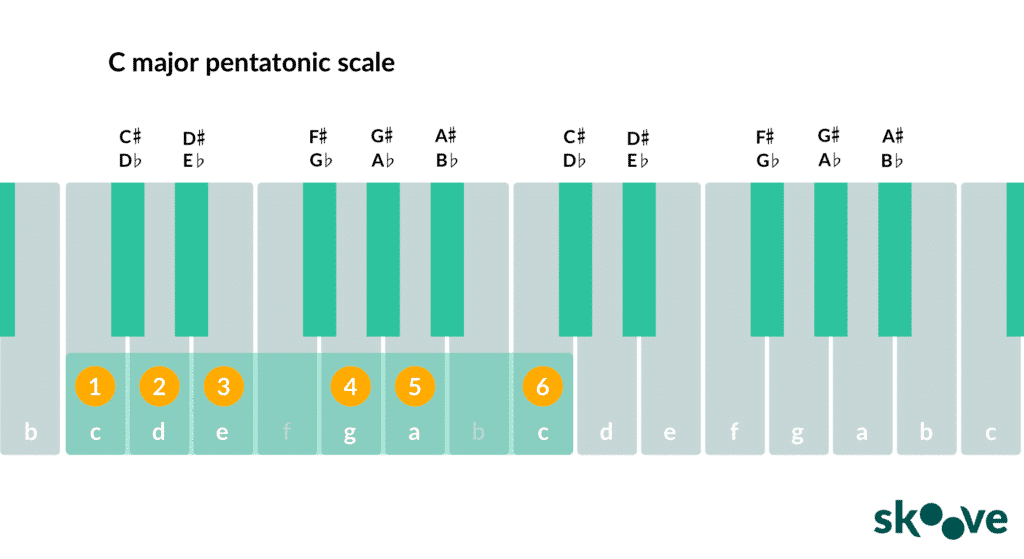Last Updated on February 19, 2022 by IDS Team
The pentatonic scale is a mainstays of American and Western music from folk, Appalachian ballads, and blues to roots rock and country and western. The minor pentatonic, with its deeper, darker sound, is more commonly used in blues and folk-rock, whilst the major pentatonic scale is more suited to country and western, with a twangier sound used in slide guitar playing and chicken picking techniques.
The major pentatonic scale is obtained by taking the normal (natural) major scale and removing two notes: the fourth note and the seventh note. All the notes that remain (five, or penta) create this scale, which is considered a very stable and strong scale, mostly fitted for bass or melodies where you are certain about the feelings that they transmit.

The minor pentatonic scale follows the natural minor but only has five notes instead of seven. Here, the second and flattened sixth notes are removed, giving a scale which sounds warm and pleasing, somewhere in between major and minor and neither eastern nor western. Also known as the blues scale, it has built modern pop music – pioneers of pop like the Beatles have taken inspiration from the blues and rock’n’roll tracks of their predecessors.
Both the major and minor pentatonic scale have a tonal quality. They do not have any semi tones in them – due to the notes which have been removed, they instead contain whole major third and minor third intervals respectively and this lends them a lilting quality like that found in Celtic music, taking them away from the conventions of classical composition.
If you are looking to deepen your knowledge of music theory, we have a whole category of articles, which can be accessed by clicking here.
How to use the theory of the major and minor pentatonic scale in composition:
Firstly, it depends on what genre you are composing. As above, certain genres lend themselves to certain scales more easily. Nevertheless, this doesn’t mean that they cannot be exchanged. The third interval in the scale can also be used in composition to provide a lift and drive the bassline and chord progression into the chorus.
Each note of the scale is linked to a chord which is either major or minor, although to preserve the tonal quality of the scales, power chords can also be used. These are chords where the third- whether major or minor – has been removed – meaning that they are completely neutral and can be used to pivot between different keys – or even from the major pentatonic scale to the minor pentatonic scale and vice versa, with the blues/country composition ‘Windy and Warm’ by Chet Atkins being a case in point.
The minor pentatonic scale is also the basis for twelve bar blues. This is a traditional progression of chords from the American South which can easily be soloed over on guitar or used as the building blocks for composition in multiple genres such as those mentioned above.
I – I – I – I
IV – IV – I – I
V – IV – I – V
This is just the start of music theory – even in themselves, the major and minor pentatonic scales are useful for so much more than just soloing and the twelve-bar blues. Find an in depth, completely comprehensive, engaging, and enjoyable Udemy course by clicking here, with Jason Allen – available in seven languages, it covers everything you need and more.
Another useful technological tool for musicians in the Plugin Boutique Scaler 2.
This plugin not only allows you to learn music theory alongside producing your own work, it’s intuitive, simple, and has everything you need to take your music into your hands without having to get into the nitty gritty details – perfect for those musicians who prefer to learn on the go. Of course, it also covers the pentatonic scale. Find it by clicking here!



